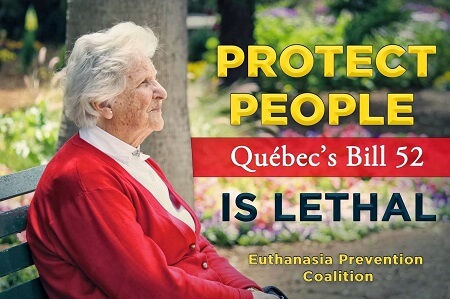 Euthanasia has proven to be a slippery slope wherever it has been practiced. It begins with “irremediable” physical suffering and ends with psychological suffering. It begins with adults and ends with children. It begins with personal consent and ends with the consent of second parties. In February 2014, Quebec became the first province in Canada to legalize euthanasia, and immediately doctors began calling for less restrictions. In fact, before the bill even passed, Yves Robert, secretary of Quebec’s College of Physicians, said, “It’s only a step. There are many questions that are still unanswered” (“As Quebec set to legalize euthanasia, doctors already looking to expand who qualifies,” National Post, Feb. 13, 2014). The “questions” are not “about who is receiving euthanasia but who is being denied it.” He used the example of an advanced Alzheimer’s patient who would not be eligible because he is no longer capable of giving consent. He also addressed the requirement that the individual be an adult, implying that those who are younger should be eligible. “We will have to think about that, not only for [incapable] adults but obviously for youngsters who face terminal diseases,” Dr. Robert said. Belgium is leading the way. It legalized euthanasia in 2002, and already it has extended the practice to minors and has euthanized “people suffering depression and a set of deaf twins who were losing their eyesight.” (Friday Church News Notes, August 14, 2015, www.wayoflife.org, [email protected], 866-295-4143) Comments are closed.
|
Archives
February 2020
|
Ads do not imply endorsement | Policy/Terms of Service | About Us | Contact Us | © Life Work Academy, Inc.
 RSS Feed
RSS Feed

